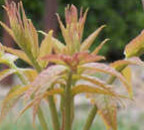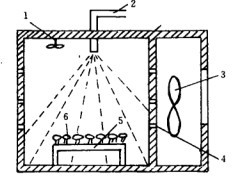Effects of hot air, microwave and combined drying on the quality of Toona sinensis sprouts
Absrtact: The effects of microwave drying equipment, hot air drying and combined hot air-microwave drying on the drying characteristics and quality of Toona sinensis buds were studied. The results showed that the comprehensive evaluation values of the dried products obtained by hot air drying at 60 C and microwave drying at 550 W were 0.890 and 0.884, respectively.
The optimum drying conditions of hot air-microwave combined drying were that the dry base moisture content was 0.67 kg/kg from 60 C hot air drying to the conversion point in the early stage and 330 W power drying in the later stage. Under these conditions, the comprehensive evaluation value of dry products obtained by combined drying was 0.972. The results showed that hot air-microwave combined drying could maintain the quality of Toona sinensis buds.
Key words: Toona sinensis sprouts microwave drying; hot air drying; hot air and microwave combined drying

Toona sinensis is a traditional woody vegetable in China, rich in calcium, VC, phosphorus, thiamine and other nutrients. Toona sinensis contains a variety of bioactive ingredients, with anti-inflammatory, antimicrobial, antioxidant, antiviral, anti-allergic, free radical elimination, lipid regulation, softening blood vessels and enhancing vascular tension and other effects.

However, when Toona sinensis buds are stored at room temperature, the leaves are easy to fall off and rot. After grain rain, the leaves become fibrotic gradually, the taste is dull, the nutritional value is greatly reduced, and finally the edible value is lost. Drying Toona sinensis sprouts can not only maintain the original color, aroma, taste and nutritional components, but also be easy to preserve and carry. It can be used as ready-to-eat, convenient condiments, and has high practical value.
At present, the main drying methods of fruits and vegetables are hot air drying, microwave drying, vacuum freeze drying, infrared drying and combined drying. Traditional hot air drying can not meet people's demand for high quality and original ecology of food; microwave drying has high energy utilization rate, short heating time, uniform heating, mildew prevention and sterilization, and retains the color and nutritional value of fruits and vegetables, but it has many problems, such as large investment, complex technology and difficult to master.
Combined drying has unique advantages in improving drying rate, reducing energy consumption and improving the quality of finished products. It is widely used in spinach, longan, mushroom, yellow cauliflower, snow lotus fruit, strawberry and other fruit and vegetable drying fields. At present, the main drying methods of Toona sinensis are hot air drying, vacuum drying, microwave drying, vacuum freeze drying, etc. There is no systematic study on the combined drying of Toona sinensis.
Therefore, the effects of hot air, microwave and their combined drying on the quality of Toona sinensis sprouts were studied in this experiment. The aim was to determine the technological parameters of Toona sinensis drying, find a suitable combined drying method for Toona sinensis, improve the quality of dried products, and provide theoretical basis for fruit and vegetable drying.